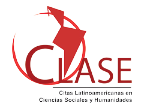Information and the dialectic of human development
DOI:
https://doi.org/10.5433/1981-8920.2017v22n2p293Keywords:
Dialectic, Information, Dialectics of the Informational BeingAbstract
Introduction: Information and the human being are two inseparable realities that can not exist without each other. On the one hand, to say "information" implies recognizing a human being who created it and, on the other hand, being before a human being presupposes the existence of information to form, communicate and live in society. This unity, information the human being, manifests itself as an ontological reality: the informational being. Faced with this interdependence arises the concern to analyze how the human information-development relationship appears philosophically from a holistic and dialectical perspective. Objective: The document seeks to explain and to understand the process by which the human being, seen as an informational goes through several stages in his dialectical process to reach his self-knowledge. Methodology: the dialectical method was adopted in this work, because it recognizes the interdependence of opposites without privileging or underestimating any of them and at the same time contemplates reality as something always dynamic. In addition, documentary research was used to identify authors and articles that analyzed the problem. Simultaneously, the hermeneutical method was used to interpret the texts consulted and to establish a dialogue with the proposals of the thinkers who served as theoretical references. The method of analysis and synthesis was another methodological tool adopted and, finally, the deductive method was useful to make the necessary logical inferences in order to obtain the duly substantiated. Conclusions. First, the notions of dialectic and information are analyzed and, in the second moment, these concepts are applied in the analysis of human development from the point of view of informational. Results: The study showed the need to use a dialectic other than Hegelian, because the contradictions are not solved in a superior synthesis, but in which the tension is permanently preserved. As a consequence, there is no direction or term of motion. It has been discovered that the moments of the dialectic: being in oneself, being outside oneself, being for oneself appear in the movement of the informational being as a subject that constructs ideal information, documents as objectification of information and reconstruction of information in its nature ideal when querying documents. Conclusions: it is concluded that information is an indispensable agent for the process of human formation, and in the informative-documentary sphere converge ontology, gnosiology, anthropology and social.Downloads
References
BEUCHOT, Mauricio. Respuesta a “Los límites de la hermenéutica analógica”. Multidisciplina. Revista electrónica de la Facultad de Estudios Superiores Acatlán. N. 3. Naucalpan, Estado de México: FES Acatlán. pp. 107-109. 2009. Disponible en: http://www.acatlan.unam.mx/mul tidisciplina/21/> [Consultado en septiembre de 2017 ]
DERRIDA, J. Gramatología. México: Siglo XXI, 1986.
DERRIDA, J. La diseminación. Madrid: Fundamentos, 1975.
DODIG-CRNKOVIR, G. Info-computacionalismo. Glossarium bitri. Glosario de conceptos, metáforas, teorías y problemas en torno a la información José María Díaz Nafría, Mario Pérez- Montoro Gutiérrez, Francisco Salto Alemany (Coord). León: Universidad de León, 2010. pp. 106-107.
FREGE, G. El pensamiento. Investigaciones lógicas. Madrid: Tecnos, 1984 GADAMER, H. G. Verdad y método. Salamanca: Sígueme, 1997.
HARTLEY, R. V. L. Transmission of Information. Bell System Technical Journal, v. 7, n. 3. p. 535-563. 1928
HEGEL, G. W. F. Ciencia de la lógica. Buenos Aires: Solar, 1968.
HEGEL, G. W. F. Fenomenología del Espíritu. Madrid: FCE España, 1985.
HEGEL, G. W. F. Enciclopedia de las ciencias filosóficas. México: Casa Juan Pablos, 2005.
HEIDEGGER, M. El Ser y el tiempo. México: FCE, 1980.
KANT, I. Crítica de la razón pura. Buenos Aires: Colihue, 2007.
LANDAUER, R. The physical nature of information. Physics Letters A. 217. p. 188-193. 1996.
PORFIRIO. Isagoge Εισαγογη. Edición trilingüe. Barcelona: Anthropos, 2003. Disponible en: http://es.scribd.com/doc/62407693/Porfirio-Isagogetrilingue#scribd> [Consultado en septiembre de 2017 ]
MARX, K. Manuscritos: economía y filosofía. Madrid: Alianza Editorial,1980.
MARX, K. y ENGELS, F. La ideología alemana. México: Grijalvo, 1987.
NIETZCHE, F. Fragmentos póstumos. Una selección. Madrid: Abada Editores, 2004.
RAPAPORT, A. What is information? En SARACEVIC, T. (Comp. y Ed.) Introduction to information science. New York & London: Bowker Company, 1970. p. 5-12.
REALE, G y ANTISERI, D. Historia del pensamiento filosófico y científico. Tomo 3. Barcelona: Herder, 1995.
RENDÓN ROJAS, M. A. Bases teóricas y filosóficas de la Bibliotecología. 2ª. Ed. México: UNAM / CUIB, 2005.
RENDÓN ROJAS, M. A. El concepto de información desde una óptica de la filosofía de la Bibliotecología y Estudios de la Información. HERNÁNDEZ SALAZAR, P. (Coord) Significados e interpretaciones de la información desde el usuario. México: UNAM, Instituto de Investigaciones Bibliotecológicas y de la Información, 2017. p. 29-76.
SHANNON, C. E. Y WEAVER, W. The mathematical theory of communication. Urbana, il: University of Illinois Press, 1949.
STONIER, T. Information as a basic property of the universe. Bio Systems, v. 38, 135-140. 1996.
WIENER, N. Cybernetics or control and communication in the animal and the machine. 2d. ed. New York: MIT Press, 1961.
Downloads
Published
How to Cite
Issue
Section
License
A revista se reserva o direito de efetuar, nos originais, alterações de ordem normativa, ortográfica e gramatical, com vistas a manter o padrão culto da língua e a credibilidade do veículo. Respeitará, no entanto, o estilo de escrever dos autores. Alterações, correções ou sugestões de ordem conceitual serão encaminhadas aos autores, quando necessário.
O conteúdo dos textos e a citação e uso de imagens submetidas são de inteira responsabilidade dos autores.
Em todas as citações posteriores, deverá ser consignada a fonte original de publicação, no caso a Informação & Informação.











